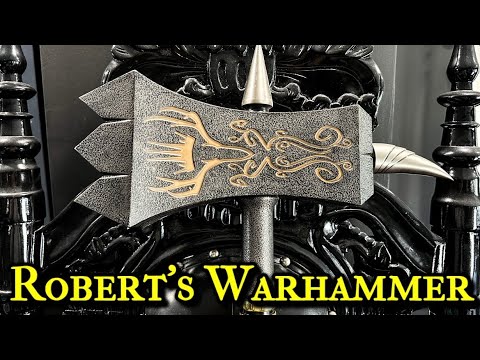
Robert Baratheon: The Hammer That Shaped Westeros
Robert Baratheon, the first of his name, is a figure etched in the annals of Westerosi history. More than just a king, he was a symbol – a symbol of rebellion, of strength, and ultimately, of a kingdom teetering on the brink. His life, marked by both glorious victories and tragic flaws, continues to captivate audiences through the A Song of Ice and Fire series and its television adaptation, Game of Thrones. This article delves into the life and reign of Robert Baratheon, exploring his rise to power, his tumultuous kingship, and the lasting impact he had on the Seven Kingdoms.
The Rebel Prince: Robert’s Rebellion
Born into the noble House Baratheon of Storm’s End, Robert Baratheon was a charismatic and formidable warrior from a young age. His upbringing was intertwined with that of Eddard Stark, the future Lord of Winterfell, as both were fostered at the Eyrie under the tutelage of Jon Arryn. This formed a bond of brotherhood that would prove crucial in the years to come.
The spark that ignited Robert’s Rebellion was the alleged abduction of Lyanna Stark, Eddard’s sister and Robert’s betrothed, by Prince Rhaegar Targaryen. While the true nature of their relationship remains a point of contention, the act served as the catalyst for open rebellion against the Mad King, Aerys II Targaryen. Robert, fueled by rage and a sense of honor, raised his banner and called upon his allies.
Robert’s charisma and martial prowess proved to be decisive factors in the war. He secured key alliances with House Stark, House Arryn, and later, House Tully. His victory at the Battle of the Trident, where he personally slew Rhaegar Targaryen, shattered the Targaryen army and paved the way for the Sack of King’s Landing. Though deeply saddened by Lyanna’s death shortly after the war’s end, Robert emerged as the undisputed leader of the rebellion.
The Reign of the Usurper: King Robert I
With the Targaryen dynasty overthrown, Robert Baratheon ascended the Iron Throne, becoming King Robert I. His claim was based on his Targaryen ancestry through his grandmother, Princess Rhaelle Targaryen. While his right to rule was questioned by some, his victory on the battlefield and the support of the major houses solidified his position.
Despite his battlefield successes, Robert proved to be a less effective ruler. He preferred hunting, feasting, and tournaments to the tedious tasks of governance. He left much of the day-to-day administration to his Hand, Jon Arryn, and later, Eddard Stark. Robert’s reign was marked by extravagance, corruption, and mounting debts to the Iron Bank of Braavos.
His marriage to Cersei Lannister, arranged to secure an alliance with House Lannister, was loveless and politically motivated. Cersei resented Robert’s continued obsession with Lyanna Stark, and their relationship was poisoned by mutual distrust and infidelity. Unbeknownst to Robert, Cersei’s children were not his own, but the product of an incestuous relationship with her twin brother, Jaime Lannister. This secret would ultimately plunge the Seven Kingdoms into another bloody conflict.
The Seeds of Destruction: A Kingdom on the Brink
The death of Jon Arryn, Robert’s trusted Hand, triggered a chain of events that would lead to the War of the Five Kings. Robert, suspecting foul play, traveled to Winterfell to seek out Eddard Stark and offer him the position of Hand. Eddard, driven by a sense of duty and loyalty to his friend, accepted the role and journeyed to King’s Landing.
Eddard’s investigation into Jon Arryn’s death uncovered the truth about Cersei’s children. Before he could act, however, Robert was fatally wounded during a hunting accident, orchestrated by Cersei. On his deathbed, Robert named Eddard as Protector of the Realm until his (supposed) son, Joffrey, came of age. This decision set the stage for a power struggle that would tear the Seven Kingdoms apart.
Robert’s death plunged Westeros into chaos. Joffrey seized the throne, sparking rebellions from Robert’s brothers, Stannis and Renly Baratheon, as well as Robb Stark, who declared himself King in the North. The War of the Five Kings was a direct consequence of Robert’s flawed reign and the secrets surrounding his succession.
Legacy of the Hammer: A Lasting Impact
Robert Baratheon’s legacy is complex and multifaceted. He was a charismatic leader and a fearsome warrior who overthrew a tyrannical dynasty. However, his inability to adapt to the responsibilities of kingship and his personal flaws ultimately led to the downfall of his own house and the destabilization of the Seven Kingdoms.
Despite his failings, Robert remains a compelling figure in Westerosi history. His strength, his passion, and his tragic flaws resonate with audiences. He serves as a cautionary tale about the dangers of power and the importance of good governance. His rebellion, while ultimately successful in overthrowing the Targaryens, sowed the seeds of future conflict and left a lasting scar on the realm.
The consequences of Robert’s actions continue to shape the events of A Song of Ice and Fire. The struggle for the Iron Throne, the rise of Daenerys Targaryen, and the threat from beyond the Wall are all intertwined with the legacy of Robert Baratheon, the Hammer who reshaped Westeros. [See also: The Targaryen Dynasty: A History of Fire and Blood] [See also: The War of the Five Kings: A Clash of Power] [See also: The Baratheon Family Tree: Lineage and Legacy]
In conclusion, Robert Baratheon, despite his shortcomings as a king, remains a pivotal figure in the history of Westeros. His rebellion ended the Targaryen dynasty, and his reign, though flawed, set the stage for the events of A Song of Ice and Fire. His story serves as a reminder that even the most powerful individuals can be undone by their own weaknesses, and that the consequences of their actions can reverberate through generations.
